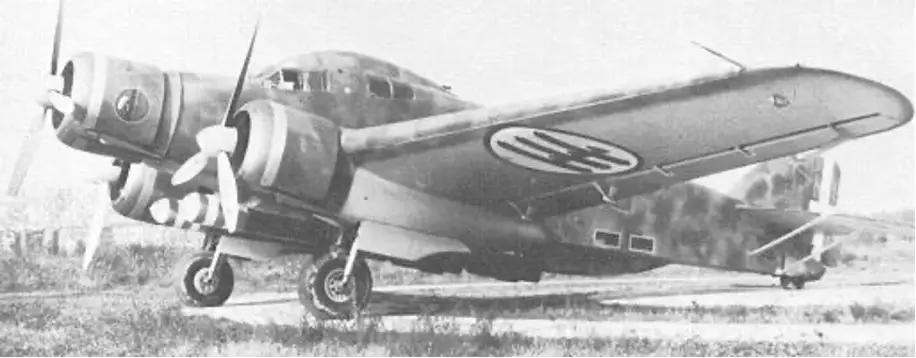In the summer of 1942, the British organized the largest resupply mission to Malta, known as Operation Pedestal. Italian and German forces attacked the convoy and its escort for three days with bombers, submarines, and motor torpedo boats. In the end only 5 out of 14 merchant ships (including the tanker Ohio) reached the island. However, still they managed to keep Malta in the fight until the radical change of the strategic picture in the Mediterranean occurred between the end of October and early November 1942.
The opposition against Pedestal saw the deployment of almost 800 Axis aircraft, beyond the Submarines and Motor torpedo boats, however, one very overlooked aspect of the event is that the Italian air force deployed some strange but innovative weapons that deserve some more attention.
The Motobomba FFF
During the 12th of August 1942, the second day of attacks suffered by the Pedestal convoy, the Italian air force units deployed in Sardinia launched 3 waves of air strikes. In the first one, 10 S.M.84 bombers dropped their payload against the allied ships, which consisted of Motobombe FFF. This weapon was essentially an airborne torpedo, 500m in diameter and weighing 360kg, it was dropped from higher altitudes than standard torpedoes and utilized a parachute. Once in the water, the Motobomba would have started its course, which was not straight but spiraling. For roughly 30 minutes, the Motobomba was set run on this pattern, with the radius of the spiral increasing at each turn.
The idea behind this weapon was to hit ships in harbour or disrupting naval formation. Admiral Syfret, on board battleship Nelson, sighted these weapons coming down with their parachutes and thought they were naval mines. Later, the trails in the water were spotted and the convoy turned to the left, breaking the formation for a while. This favoured the next wave of Italian aircraft, comprising torpedo bombers and fighters, which attacked the convoy but achieved no great results.

Figure 1 A Motobomba FFF
This was the largest operational use of the Motobomba done by the Italian Air Force during WW2, however this was not their last deployment. The German Luftwaffe, which really liked the weapon, had placed an order for 2.000 Motobombe some years before. These were later used to launch air attacks against allied ships at anchor in Algerian ports and later also Italian ports, like the famous bombing of Bari in late 1943.
The ARP: the Italian drone
In July 1940, after observing the limits of level bombing against moving ships, Colonel Ferdinando Raffaelli of the Regia Aeronautica (Italian Air Force) sent a written proposal to the High Command explaining that it would certainly be possible to inflict serious losses on enemy convoys using unmanned aircraft which, guided by radio control, would have to crash into enemy ships, causing one or two huge bombs to explode on them.
The plane to be sacrificed (named A.R.P.) could be remotely controlled using radio impulses sent by the crew of another plane (P plane) who would have followed it at a safe distance.
Raffaelli’s idea received the approval of the air force and some resources were made available to develop the programme. Due to the inadequacy of the means available, it took almost two years to complete, and only at the end of May 1942 were the aircraft declared ready for use.
The occasion to deploy the ARP in combat came with the arrival of the Pedestal convoy in the waters south of Sardinia on the 12th of August 1942.
The ARP (an S.M.79) took off from Sardinia with a human pilot who parachuted shortly afterward, and the P plane (CANT Z1007) assumed control of the ARP, which was painted in yellow to be better seen from a distance.

Figure 2 S.M.79, the model of aircraft used for the A.R.P.
Everything seemed to work well but at some point the P plane lost contact with the ARP, which failed to respond to the commands, probably due to an electrical failure of the radio apparatus. The mission was aborted, and the ARP crashed in Algeria. The Italian drone never flew again.
The anti-ship bomb
The third and final innovative weapon deployed by the Italians during Operation Pedestal (perhaps the more conventional) was a special armor-piercing bomb, developed from the 15-inch shells fired by the Littorio class battleships. This bomb had far more potential than any other bomb previously used (also by dive bombers), weighing 630kg.

Figure 3 The 650 kg bomb ready to be loaded on the Reggiane RE.2001
These bombs were to be carried by two modified Reggiane Re2001 fighters that flew against the Pedestal convoy in the third Italian wave during the 12th August, escorted by a dozen G.50 fighters.
The two Reggiane flew towards the aircraft carrier HMS Victorious and were not fired upon, probably the British spotters mistakenly took them as Hawker Hurricanes trying to land back on the carrier. The launched their bombs and one landed in water while the second landed on the flight deck but did not explode and rolled off into the sea. Most likely an issue with the fuses had prevented the detonation. Luckily for the two Reggiane, they managed to pull off before the anti-aircraft gun crews realized what was happening and that those were enemy planes.
Sources
Ciampaglia G., La sorprendente storia della motobomba FFF, in Rivista Italiana Difesa, luglio 1999
Fanni I., L’aereo Teleguidato A.R.P. Operazione Canarino
Gueli, M., (2021). Il Reggiane RE.2001, in STORIA MILITARE N.330, pag.4-12.